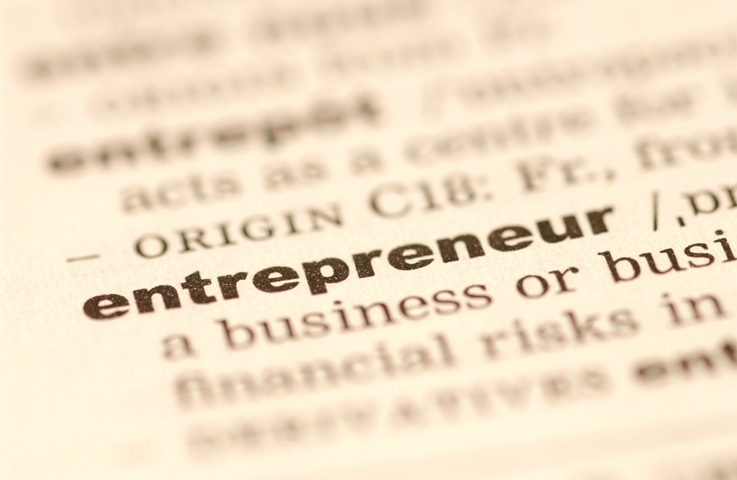 Ravi Gururaj is one of the most respected people in Indian Start-up Ecosystem and rightly so. Ravi is a member of the NASSCOM Executive Council, chairs the NASSCOM Product Council and co-hosts the NASSCOM Product Conclave. He is Charter Member of TiE Bangalore where he launched the Cloud SIG and is Co-Founder & Co-Chair of HBS Alumni Angels India chapter. VMLogix, which he founded in 2004 was venture funded by Bain Capital Ventures and acquired by Citrix in 2010.
Ravi Gururaj is one of the most respected people in Indian Start-up Ecosystem and rightly so. Ravi is a member of the NASSCOM Executive Council, chairs the NASSCOM Product Council and co-hosts the NASSCOM Product Conclave. He is Charter Member of TiE Bangalore where he launched the Cloud SIG and is Co-Founder & Co-Chair of HBS Alumni Angels India chapter. VMLogix, which he founded in 2004 was venture funded by Bain Capital Ventures and acquired by Citrix in 2010.
We get into conversation with Ravi Gururaj on the progress of NASSCOM 10K Program, HBS Alumni Activity and his thoughts on 2 biggest pain points for startups – turning early adopters into customers, and marketing on a shoestring budget. Read on!
Tell us how the NASSCOM 10K Startup Program has been progressing?
We had a tremendous first year. It’s a reflection of demand in the ecosystem for nurturing. There is lot of early stage entrepreneurship flourishing in India across the board and there is definitely need for a program to help facilitate, nurture, connect and inspire. It takes a village to raise a child, and the 10K program is a framework where Industry mentors, Large companies, Angels, Peer entrepreneurs and others can make contributions to the startups efficiently.
We are well on the way towards the journey.
Our goal is not to merely have 10K startups listed in our database, but rather we are working to positively impact that many companies by connecting them to Investors, talent, customers and helping incubate them in the earliest stage of the lifecycle.
Most importantly, the goal is have the startups making up the 10K Program leverage the inherent sense of community that comes with this awesome program.We have made great progress in our first year would like to impact each of these companies positively in their trajectory. There is unlimited demand for our services so the program is a work in progress to figure out how to scale up and serve the community pan India.
Any tips to get into NASSCOM 10K?
It’s a very open platform. If you don’t get in, that doesn’t mean you cannot access our resources. Getting in means you were a little bit more ready for the resources, activities and mentoring we are going to present to you. You can always apply for the next batch after having made more progress and when you are more ready. Here are the general guidelines –
- Try and have as complete a team as possible
- Try to make substantial progress towards a MVP
- Be able to clearly articulate the value proposition for your business
- Try and get a few early customers – even PoC might be good enough and early revenue is even better
So, do you take startups in Ideating phase into the 10K program?
Generally Not. Given at our limited resources and our ability to scale it out, we’ll look at the companies that are little more ready. In the natural stack ranking given how many people are applying,it’s unlikely we’ll get to a startup at pure idea phase.
There is no hard and fast rule, startups with some exceptional point on their side might be considered.
How would be the activity at HBS Alumni Angels, given that there are predictions that Angel Investing in first time companies will slow down this year?
For HBS Alumni, we did 6 deals last year. We are a small group and we hope to do 5-6 deals this year too. By definition, the Angel group can consist of only HBS Alumni, who are willing to make angel investment and who are active in India. We also ensure our Investor Alumni help the startups in other value added ways too and we also syndicate our deals to our global chapter members where appropriate.
What are your broad areas of Interest at HBS Angels?
We have an investment thesis of being first money in and are biased towards technology oriented domains such as Mobility, SaaS and IoT. We’ll avoid deals that are infrastructure oriented and ones that require substantial capex or unusually long gestation periods. Our bias if any, would be any towards global companies, where our HBS Alumni Angels chapters worldwide might help with their global exposure and connections.
How can a startup turn early adopters into customers?
The first thing would be to figure out balance between Real customers vs Referral Customers.
What I suggest most people do is to bucket your customers.Do not bias your business plans too heavily based on your early adopters feedback. Those accounts are often friends & family or atypical of the regular customer profile. It’s very important that early on, you try and find real customers. In fact as an angel investor, I am careful how I refer my companies to PoC prospects. Because, those referral accounts might do an early PoC and open their doors too easily and the startup does not learn a lot in this interaction from this non-paying PoC. I believe startups often do too many free POCs and overweight their portfolio with prospects who might not finally buy from them at a reasonable pricepoint. Every time a startup gets one referral customers ,they should try hard to find real customers.
The second thing is the dimension in which they give away stuff for free – too early and for too long.
You don’t discover the optimal price points customers are willing to pay and what value proposition is being delivered by the startup if you give too deep a set of discounts. You should always seek to try and validate monetization models that charge customers.
How to market a startup on limited budget?
It’s never been cheaper to market than today, but there is also more noise out there than ever before. We are over deluged with information.
Focus on finding a few early people who are good evangelists, and find people who have a big trusted voice, and try to get to them. But, it is important to back up your PR with a real product with deep substance.
If the user finds value in your startup, get user testimonials.They will certainly help in today’s socially hyperactive world.
Go to events and lot of platform programs where others may end up blogging, tweeting and writing about your startup. You need to weave a great story that is authentic, interesting and engaging. Only then will people write about you.
Which areas do you see startups have a scope to impact?
Fundamentally, opportunities abound across big broad swatches of your landscape. One of my predictions in SandHill report is unprecedented use of technology tools in politics this election year.This year politics will see technology and social media used at levels like never before – that represent a huge opportunity.
Healthcare, education, utilities, manufacturing, transport all take a long way to change and in each of these areas we will see tons of smaller innovations on the fringes. Now is the time to start ideating – IoT, Aadhaar, Industrial Cloud,Mobility, Tablet Technology in Education and so on.












